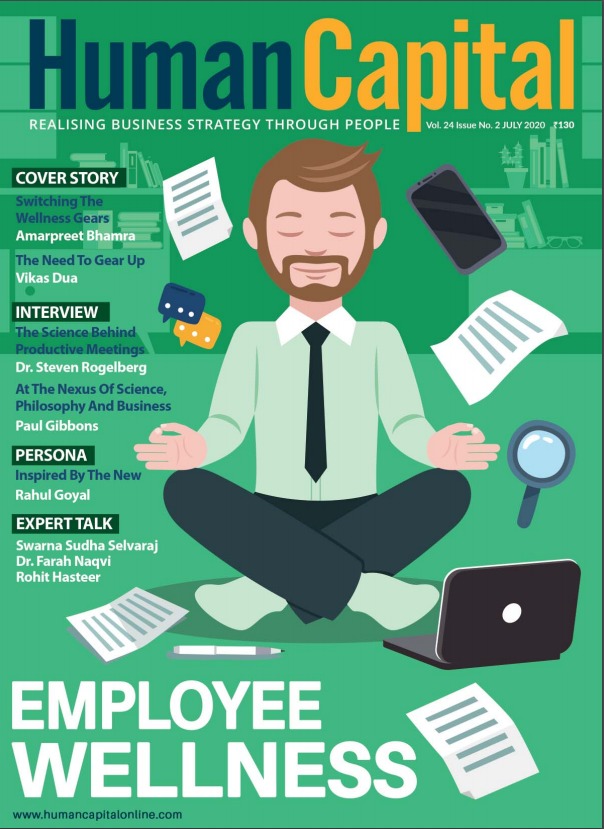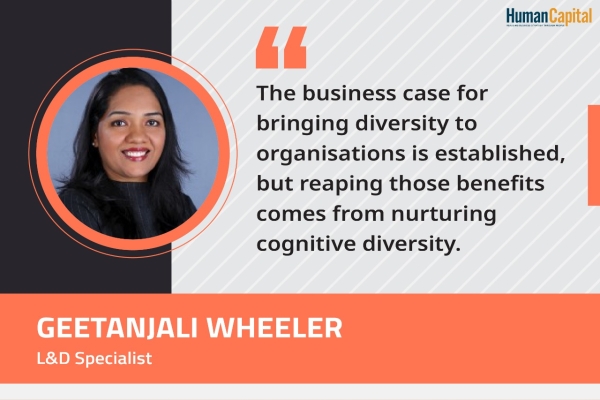Combining technology with adult learning principles, L&D professionals can confidently take on increasing distractions and win the war for the hearts and minds of the distracted and confused learner with utmost confidence.
The Professor turned Trainer was losing patience with the class. Delivering a session on Strategy, Dr. Raina was used to rapt, if not devout, attention from his class. However, delivering the same session at this blue chip MNC, he was struggling to get the participants to comprehend what was being put across by him. It was not that they were intellectually challenged, indifferent, or disinterested, but armed with their mobile phones and, thereby, WhatsApp, their office mailboxes, and a welter of Apps- which seemed to be ceaselessly pinging their attention away. Dr. Raina, like any Trainer, knew that concepts need undiluted attention to be understood and thereafter practiced. Fractured or piecemeal attention would leave them clueless, and thus render the training ineffective – a situation no trainer would love to be in. This unfortunately is the sorry tale of nearly all trainers. Parachuted into a class, often without prior awareness of the organisational context, and the specific needs of the participants, the trainer launches into his standard spiel, only to be greeted by eyes glazing over and dull or distracted expressions; and the constant dart of eyeballs to the mobiles and laptops.
Looking closely at the literature
What then is the solution to this world-wide problem? Should mobiles or hand-held devices be banished from the Training room, or should one device solutions through learning methods in itself, and leverage technology to blunt the digital swamp. Some of the solutions lie in looking closely at the learning literature itself. A look at the characteristics of the adult learner holds some clues. For one, learners are supposed to be self-directed and autonomous. So, what if they are given literature to read up and assessments to prepare for. What if the class is just an extension of an e-learning session, which started in the participant’s study room. What if, a la Khan Academy, the basic tenets of complex ideas are shared ahead of the classroom session, so that the latter really becomes an extension of what was started much earlier; and also, a time to practice in groups.
Next, adult learners are practical creatures. By the time you reach adulthood, you are wise enough to know time is money and money is time. Classroom knowledge needs to be impactful and counting. So, even before you walk into the classroom, you need to know the areas of concern for the participants, what is it that they would appreciate, what would award their individual bottom line, so to say. If it is a sales team you are training, living through trying times, do not just tell them about the pleasures of SPANCO or SPIN, but spur their curiosity on how the other sales teams are cracking the recession hit market. Send mailers prior to the event, mail podcasts to the selected participants, not just to educate them about the programme, but to whet their appetite about the solution which will be proposed during the classroom Training. Let a shroud of mystery prevail; bring Hitchcock to the class! As adult learners, they will realize the two-day training will be a culmination of a process, rather than a standalone event or a two-days-away-from-office break.
Need for differentiation and selection
Yet another characteristic of adult learners is that they are relevance-oriented. Unlike children who are a tabula rasa*, and can absorb anything which comes their way, adults have well developed skills for differentiation and selection. Digital media understands this well. If you do a search over the flight rates for Delhi-Mumbai, there are sure fire chances that whatever you do over the internet, the page is sure to be flanked by advertisements with competing rates for the same flights. Learning too needs to be able to pre-empt needs, rather than rely on a once a year TNA outcomes. Mini-TNAs customised for multiple BUs could be done quarterly, and with a pulse on the business hot buttons, nuggets of information, webinars, short e-modules addressing micro concerns could be designed and delivered. Often, L&D departments use performance data, rather than questionnaires, to deliver interventions at the point of need and time. A Just-in-time version of learning where the learning is attuned to ups and downs in performance.
For technical training, a good physical infrastructure adds to the relevance of L&D. Some of the key software that goes along with Project Management training for example is best taught in a Lab like environment with a robust IT infrastructure in place. It also helps marry cognitive and kinaesthetic learning#, making it a holistic experience for the learner, far more comprehensive than the incoherent and staccato distractions of social media. Another adult learning principle that adults need to be shown respect, underlines the need to motivate the learner. The journey of Learning is quite long, and, it is good to award the small milestones, celebrate micro victories with virtual certificates, mails to supervisors, developing learning awards in every R&R event – all these count in associating L&D with an aura of empathy, motivation, and a deep connect with positivity.
Technology, a value adder
It is unlikely that the situation will improve in terms of distractions, and it is important for L&D departments to capture the attention and focus of their constituency. And in this ding dong battle, it is good to remember that technology is value neutral. It is how we deploy it that makes all the difference. Hence, it can be used to enhance the case for learning, just as it can be a detractor as well. Podcasts, audio-visual learning nuggets, can flip flop the learning paradigms, ensuring that self-directed learning is interspersed with organisational learning thrusts. The best way to deal with the distractions of technology is deploying technology itself in a well thought out strategy to win the hearts and minds of the distracted learner. Combining technology with adult learning principles, L&D professionals can confidently take on increasing distractions and win the war for the hearts and minds of the distracted and confused learner with utmost confidence.
* - Tabula rasa refers to the epistemological idea that individuals are born without built-in mental content and that all knowledge comes from experience or perception.
# - A learning style in which learning takes place by the students carrying out physical activities, rather than listening to a lecture or watching demonstrations.
Are you comfortable working with dispersed colleagues?
Trending
-
SBI General Insurance Launches Digital Health Campaign
-
CredR Rolls Out 'Life Happens' Leave For Its Employees
-
Meesho Announces 30-Week Gender-Neutral Parental Leave Policy
-
Microsoft Unveils Tech Resilience Curriculum To Foster An Inclusive Future
-
60% Indian Professionals Looking For Job Change Due To COVID: Survey
-
SpringPeople And Siemens Collaborate For Digital Transformation Push
-
86% Professionals Believe Hybrid Work Is Essential For Work Life Balance: Report
-
Almost 1 In Every 3 People's Personal Life Affected Due To Work Stress
-
Meesho Rolls Out Reset And Recharge Policy For Employees
-
80% Of Talent Leaders & Academics Say Pandemic Changed Skill Needs For Youth: Report
-
Hero Electric Rolls Out 'Hero Care' Program For Employees
-
Human Capital In Collaboration With ASSOCHAM Hosts Virtual Conference
-
IKEA India, Tata STRIVE Collaborate To Create Employability And Entrepreneurship Opportunities
-
SAP India, Microsoft Launch Tech Skilling Program for Young Women
-
DXC Technology, NASSCOM Collaborate For Employability Skills Program
-
Lenskart To Hire Over 2000 Employees Across India By 2022
-
Mindtree Launches Learn-and-Earn Program
-
Tata AIA Extends 'Raksha Ka Teeka' To Its Employees
-
Swadesh Behera Is The New CPO Of Titan
-
NetConnect Global Plans To Recruit 5000 Tech Professionals In India
-
Hubhopper Plans To Hire 60% Of Indian Podcasters By 2022
-
Corporate India Needs More Women In Leadership Roles: Report
-
Aon to Invest $30 Million and Create 10,000 Apprenticeships by 2030
-
Tech Mahindra Launches ‘Gift a Career’ Initiative for Upskilling of Youth
-
40% Women Prefer Flexible Working Options in Post-COVID World: Survey
-
3 out of 4 companies believe they can effectively hire employees virtually: Report
-
Vodafone , CGI and NASSCOM Foundation launch digital skills platform
-
Odisha: Bank, postal employees to deliver cash for elderly, differently-abled persons
-
Skill India launches AI-based digital platform for "Skilled Workforce"
-
Hiring activity declines 6.73% in first quarter: Survey
-
70% startups impacted by COVID-19 pandemic
-
Bajaj Allianz Life ropes in Santanu Banerjee as CHRO
-
Over 70 Percent MSMEs look at cutting jobs to sustain businesses
-
93 Per Cent employees stressed about returning to office post-lockdown
-
Johnson & Johnson India announces family benefits for same gender partners
-
Indian firms turning friendly towards working mothers
-
Welspun India names Rajendra Mehta as new CHRO
-
Wipro partners with NASSCOM to launch Future Skills platform



Human Capital is niche media organisation for HR and Corporate. Our aim is to create an outstanding user experience for all our clients, readers, employers and employees through inspiring, industry-leading content pieces in the form of case studies, analysis, expert reports, authored articles and blogs. We cover topics such as talent acquisition, learning and development, diversity and inclusion, leadership, compensation, recruitment and many more.
Subscribe Now



.PNG)









































Comment